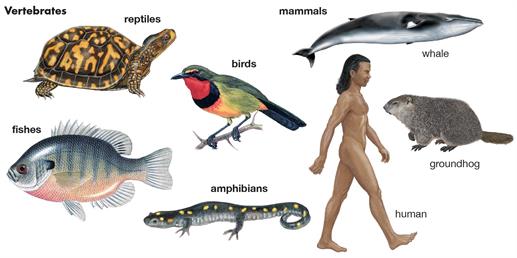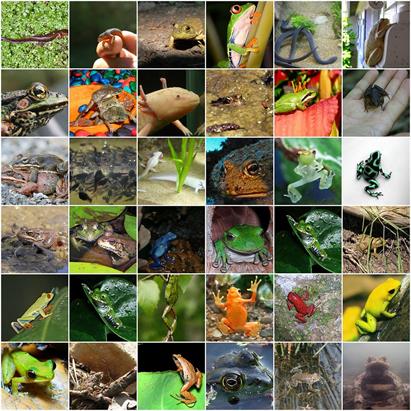PDF chapter test TRY NOW
Characteristics of Chordata:
- The animals of this phylum have a rod-shaped structure known as a notochord that provides skeletal support to the body. It is seen during the embryonic stages for most chordates and in the adult stages for some chordates.
- They have a nerve cord that connects the brain.
- The aquatic animals have a structure known as the Pharyngeal slit that allows the exit of water.
- These animals also have a post-anal tail which helps in balancing. They are made up of muscles and skeletal structures.
Vertebrata is a subphylum of the phylum Chordata. The phylum Chordata includes all the vertebrates and is classified into five classes as follows:

Phylum Chordata
Image credits: Phylum Chordata
- Pisces
- Amphibia
- Reptilia
- Aves
- Mammals
These animals can be divided into cold-blooded and warm-blooded animals.
Cold-blooded: The animals which keep their internal body temperature constant are known as cold-blooded animals.
Example:
Fishes, Reptiles, Insects, Amphibians
Warm-blooded animals: The animals in which the body temperature varies with the variation in the environment are known as warm-blooded animals.
Example:
Mammals and birds
Class Pisces:
- These are fishes.
- They are aquatic cold-blooded vertebrates.
- They have a streamlined (boat-shaped)body and muscular tail that helps them to move easily through the water.
- Their paired and median fins help in their locomotion.
- They reproduce through sexual mode and laying eggs.
Example:
Synchiropus splendidus (Mandarin fish), Scoliodon (Dogfish), Labeo rohita (Rohu), Exocetus (Flying fish), Anabas (climbing perch), Male hippocampus (sea horse).

Class Pisces
Class Amphibia:
- These are animals which differ from the fishes as they lack scales.
- Like fishes, they are cold-blooded animals.
- They are amphibious as they are found both in water and on land.
- Locomotion is by two pairs of limbs.
- They reproduce by sexual reproduction.
Example:
Toad, Hyla (tree frog), Frogs, Rana tigrina (common frog) and Salamanders.

Class Amphibia
Reference:
https://www.flickr.com/photos/tim_ellis/2452232957
